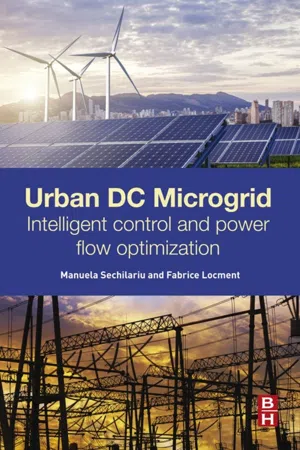1. Smart Grid—Solution for Traditional Utility Grid Issues
In the new energy landscape, the increasing power consumption requires maintaining power grid safety and reliability with permanent innovations in electricity flow regulation, with less mismatching between electricity generation and demand and integration of renewable energies. In addition to the performance of load demand management, optimizing scheduling, improving energy quality, improving assets efficiency, integrating dynamic pricing, and incorporating more renewable electricity sources, the continuous challenge of the traditional utility grid is power balancing. Even if the supply interruption rate and accumulated duration is very weak today, the power generation, transmission, and distribution remain vulnerable because of major changes undergone by this system in the context of current environmental, technical, and economic constraints. Power grid fluctuations in power demand and power generation, even for few seconds, induce an effect causing the commissioning of additional conventional production units. These conventional production units are based on fossil primary energy (gas, oil, coal) and form the spinning reserve of the utility grid. Thus, to ensure the balance between power generation and increasing power demand, the number of conventional production units in operation must grow. To reduce the spinning reserve, power fluctuations could be minimized by better integration of renewable energy generation and increasing the power demand response (temporary changes to electric loads in response to supply conditions).
Facing the increase of energy demand, environmental problems, and decreasing fossil energies, the renewable energies have to be integrated in the utility grid. Indeed, to reduce the greenhouse gases of power generation, the existing utility grid has already incorporated renewable energy resources as the necessary complement to traditional electricity generation. Nowadays, the distributed power generation is based on systems that may be classified as:
• a grid-connected system, with a total and permanent power injection;
• a stand-alone system, seen as a substitute of utility grid connection, usually for remote sites; or
• an off-grid/grid-connected and safety network system.
Because of the renewable energy purchase conditions, the grid-connected system for permanent energy injection is proposed in most applications, especially for variable renewable electricity generation such as wind turbine generators and photovoltaic (PV) sources. However, knowing that this kind of renewable power generation is very intermittent and random, this increased permanent injection of energy tends to cause grid-connection incidents, which have become true technical constraints. If such continuously growing production is injected into the grid without control, regardless the spinning reserve expanding, then it will increase the power mismatching in the utility grid and cause fluctuations in voltage and frequency [1]. Therefore, the vulnerability of the utility grid could drastically increase. This is because the variable renewable electricity generation, which is hardly predictable and very unsettled, is not participating in technical regulations for grid connection (setting voltage and frequency, islanding detection, etc.) and behaves as passive electric generators [1]. In response to these technical constraints, research is being performed on grid integration of decentralized renewable energy generation [2] or developing new supervision strategies as high-level energy management control [3].
Concerning grid-connected systems, many studies have been performed and solutions have been proposed on power electronic converters [4], a complex systems approach [5], and grid system connection [6]. However, because of the absence of the grid-integrated energy management, the development of renewable energy grid-connected systems could be restrained, especially by the power back grid capacity in real time [7].
Energy storage seems to be a perfect solution to handle the intermittent nature of renewable energy, but it has limitations based on available technologies, capacity, response time, life cycle cost, specified land form, and environmental impact [8–10]. For a large-scale renewable energy plant, such as a wind farm, the pumped-storage hydroelectricity station is a promising technology to deal with the random production of renewable sources [9]. This technique is the most cost-effective form of current available grid energy storage. However, capital costs and the requirement of appropriate terrain cannot generalize this solution. Recent progress in grid energy storage makes hydrogen technologies (combined fuel cells and electrolyzers with hydrogen tanks) an alternative to pumped storage [11]. In contrast, for a small-scale plant such as building-integrated renewable generators, there is little innovation to overcome the lack of grid-interactive control for grid-connected systems. For PV systems, lead-acid batteries are commonly used as storage because of the low cost with regards to their performance. However, considering a limited storage capacity, an energy management strategy needs to be developed to optimize the use of variable renewable energy for high penetration level.
Given the intermittent nature of renewable sources, the major problem associated with the stand-alone systems is the service continuity, from whence the energy storage and the number of conventional sources are required. The studies in this axis concentrate more on the techno-economic feasibility conditions, optimized storage sizing, and load management, as in [12–14].
Therefore the distributed energy generation shows a very rapid growth and reveals an increasing complexity for grid managers due mainly to prosumer sites (ie, producer and consumer sites). The intermittent nature of renewable energy sources (eg, PV and wind turbine generators) remains an issue for their integration into the public grid, resulting in fluctuations of voltage and/or frequency, harmonic pollution, difficulty for load management, etc. This leads to new methods for power balancing between production and consumption [5].
Fig. 1.1 shows that the electricity landscape includes electricity production sites on the one hand and electricity production/consumption sites on the other hand.
As mentioned previously, the intermittent nature of renewable sources leads to new methods for balancing of ...
